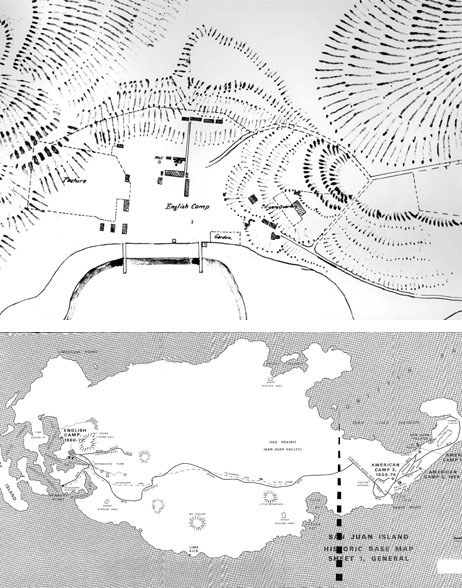Mitchell Hill, a 312-acre chunk of land that includes trails and a pristine portion of road built beginning in 1853 by the Hudson’s Bay Co., is on its way to becoming part of San Juan Island National Historical Park.
President Obama on Friday signed the bill that provides the funding for the purchase.
“With President Obama’s signature, the National Park Service now has $6 million available to purchase Mitchell Hill,” said Rep. Rick Larsen, who sponsored the bill. “This funding is a huge win for San Juan Island residents and future generations of visitors to San Juan Island National Historical Park.”
The U.S. House and Senate on Thursday approved appropriations legislation that includes the $6 million secured by Larsen. This funding was included in the conference report of the Interior and Environment Appropriations bill.
Larsen said in a press release at the time of the bill’s passage, “Protecting the historical and natural values of Mitchell Hill has been a priority for me for the last several years. Mitchell Hill is both a great place to go hiking and the home of an important part of San Juan Island history. Funding for Mitchell Hill will enhance recreational and educational opportunities for the over 250,000 visitors who visit San Juan Island National Historical Park each year.”
The funding will be used by the National Park Service to acquire more than 300 acres of land currently being managed by the Washington state Department of Natural Resources. Selling Mitchell Hill to the National Park Service has earned widespread support in the local community, including the endorsement of the National Parks Service, San Juan County, DNR and the San Juan Island Trails Committee.
Peter Dederich, superintendent of San Juan Island National Historical Park, said acquisition of Mitchell Hill will result in federal protection of the hill’s historical resources.
Within the 312 acres is a portion of the road that troops used to travel between American and English camps during the joint military occupation of 1859-1872. The road was initially built as a sheep run by Hudson’s Bay Co. and Cowichan laborers, and later improved by troops. Visible along portions of the road is rip-rap — rock placed by British troops to reinforce the road — as well as wheel ruts from wagons that once rolled along the road.
Mitchell Hill also supports various native plants and Garry oaks.
“The military road, in essence, captures the period before the U.S. took formal possession of San Juan Island when the boundary dispute was resolved,” said National Park historian Mike Vouri, author of three books about the joint military occupation era.
Vouri said Gov. James Douglas and a work crew initiated the first work on the trail, which became a sheep highway linking the grazing areas on the north and south ends of the island. American and British troops further developed the trail in the 1860s during the military occupation to facilitate communication between their camps.
“The military road symbolized peacekeeping, it tied one end of island with the other,” Vouri said. “This is very much a part of the island’s heritage.”
Besides its historical value, Mitchell Hill is also treasured by bicyclists, hikers and horseback riders.
David Dehlendorf, chairman of the San Juan Island Trails Committee, said the committee hopes to work with the national park to develop a management plan for the area. He said he hopes horses and non-motorized bikes will continue to be allowed to use the hill’s trails.
Dederich said acquisition of Mitchell Hill will be followed by a planning process to determine “appropriate visitor activities,” how trails will be maintained, and how the overall area will be managed. He said interpretive or trail signage could be installed. He said that once Mitchell Hill becomes part of the national park, the Code of Federal Regulations will apply, and “some of those regulations are stricter than the state’s.”




